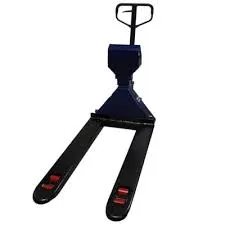


Understanding Fall Restraint Equipment Safety First
In various industries, especially those involving construction, maintenance, and elevated workspaces, the risk of falls remains a significant concern. Falls are among the leading causes of workplace injuries and fatalities, which is why implementing fall restraint equipment is of paramount importance. This article aims to provide an overview of fall restraint systems, their importance, and the types of equipment commonly used.
What is Fall Restraint Equipment?
Fall restraint equipment is designed to prevent workers from falling off edges, platforms, or other elevated surfaces. Unlike fall arrest systems, which are intended to stop a worker after a fall has occurred, fall restraint systems keep the worker securely positioned at all times, eliminating the risk of falling entirely. This is achieved by using various components designed and tested to withstand significant forces while maintaining safety.
The Importance of Fall Restraint Equipment
The importance of fall restraint equipment cannot be overstated. First and foremost, it protects workers' lives by minimizing the risks associated with working at heights. A safe work environment enhances productivity, as employees are less likely to suffer from injuries that could lead to prolonged absence or disability. Moreover, businesses that prioritize safety are likely to see improved morale among their workforce, instilling a culture of safety that resonates throughout the organization.
Regulatory bodies, such as the Occupational Safety and Health Administration (OSHA) in the United States, set strict guidelines regarding the use of fall prevention equipment. Compliance with these regulations not only ensures the safety of employees but also protects companies from legal liabilities and financial penalties that can arise from workplace accidents.
Types of Fall Restraint Equipment

There are several types of fall restraint equipment available, each serving a specific purpose and suited to various applications
1. Personal Protective Equipment (PPE) This includes safety harnesses, lanyards, and straps that are worn by workers while they are engaged in tasks at heights. Harnesses distribute the force of a fall across the body, while lanyards connect workers to secure anchor points.
2. Guardrails Installing guardrails around elevated platforms, scaffolding, or rooftops effectively prevents workers from falling over the edge. These barriers must be robust and meet specified height and strength requirements.
3. Safety Nets Safety nets are utilized in construction sites where guardrails aren't feasible. These nets are placed below areas where workers are at risk of falling, catching any person or equipment that may fall.
4. Lifelines A lifeline can be installed at elevated sites to allow workers to secure their harnesses to a not-moving anchor point. This system provides freedom of movement while ensuring that they cannot reach the edge where a fall could occur.
Conclusion
In conclusion, fall restraint equipment plays a critical role in ensuring safety in workplaces that involve height-related tasks. By using the appropriate fall restraint systems, employers can protect their workers from potentially life-threatening accidents. Investing in fall restraint equipment is not merely a regulatory obligation; it is an ethical responsibility that emphasizes the well-being of employees and fosters a safe working environment. As industries continue to evolve, so too should our approaches to safety, ensuring that every worker goes home safe and sound at the end of the day.



